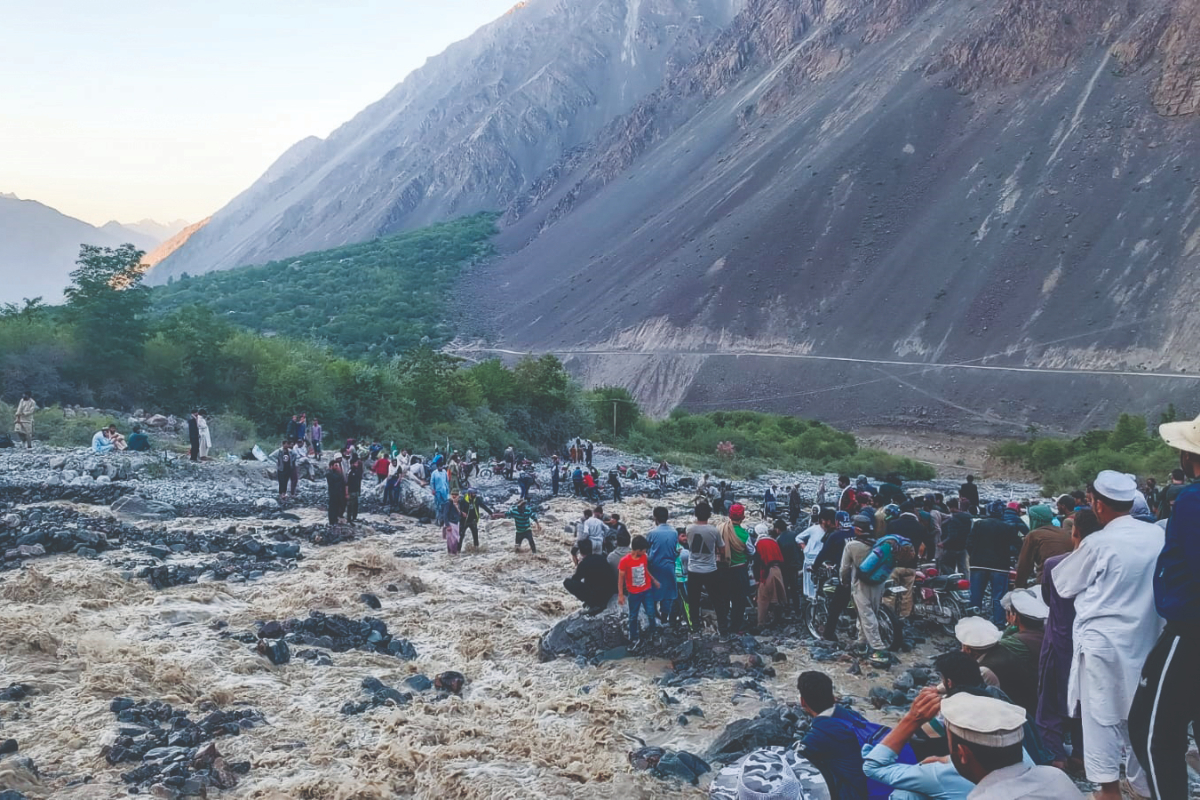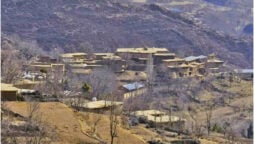
Water in Kabul River at alarming levels
One-third of KP vulnerable to flash floods
This monsoon season has witnessed hefty rains which have resulted in flash flooding in Kabul, Kurram, Gambela and Swat rivers, and their tributaries across Khyber Pakhtunkhwa.
The district administration issued a flood alert to the area and houses vulnerable to the flash flooding of the Kabul River in the Nowshera district.
Local authorities warned residents to relocate to safe areas, as the water level soared to abnormal levels in the Kabul River. Bol News reached out to the locals in the Nowshera district of Khyber Pakhtunkhwa. Faizan Khan, 32, is a resident of the area and owns a house near the bank of the Kabul River. According to Khan, it was a nightmare for the residents. Khan adds that as the water level was rising steadily in the Shah Alam River, it affected the flow in the Kabul River, causing flood concerns.
One resident of Akora Khattak said that one day between 4 to 6 am, a flash flood of water passed near their home. Their house is on the Kabul River, due to which flood water entered the houses.
The area people spent their night on the rooftops of their inundated houses. They could only move out by the morning.
The residents of Garhi Momin, Nowshera Kalan, Akora Khattak and areas adjacent to the Kabul River are at severe risk of rising water levels. Homes near the river banks are more susceptible to being inundated by flood water. Locals have started moving to safer areas.
The government set up a control room and issued an emergency contact number 09239220098/99 of the Nowshera district administration, besides the rescue 1122.
Inclement weather has disrupted life across Khyber Pakhtunkhwa. The torrential rain, flash floods and isolated snowfall in Swat, Bajaur, and Khyber Agency brought the looming spectre of climate change.
Almost one-third area of the province is vulnerable to flash floods due to rapid changes in the weather pattern and inadequate risk mitigation measures.
Water expert Rehmat Ullah says the country is most affected by climate change begetting severe spells of rain in monsoons, premature onset of summer, melting of glaciers and recurrent heat waves.
Climate change poses a more security threat to Pakistan than terrorism because it could affect temperatures, the environment, the economy and the country’s future.The expert said that there is growing evidence that climate change is very rapidly affecting the life-support systems on which humans and other species are dependent.
The geography of the province makes it vulnerable and sensitive to climate change. Referring to the past, he expressed that monsoon winds never hit western Balochistan, but this time the winds are wreaking havoc in Balochistan, Iran, Oman and the United Arab Emirates.
He cautioned the government by expressing fear that if climate change is not dealt with soon, the risk of water and food security in Pakistan will intensify.
“If the climate change continues with such speed, it will take no time to pose a severe threat to the lives of every living organism present on the earth,” he said.
The monsoon rain spell has continued across Pakistan, increasing the risk of urban flooding in megacities. The pre-monsoon rains resulted in incidents like roof collapse, crop damage and loss of property and lives.
The government is warning people to prepare for localised flooding. The National Disaster Management Authority (NDMA) has released a detailed report of the people killed during the ongoing monsoon rains.
There are reports of 310 deaths, including 118 children and damage to around 10,000 houses.
Around 99 deaths were reported in Balochistan province, 61 in Khyber Pakhtunkhwa, 60 in Punjab, 70 in Sindh, eight in Gilgit-Baltistan, and five in Azad Jammu and Kashmir and one death was reported in Islamabad.
At least 284 people were injured in rain-related incidents across the country.
Rescue 1122 data showed that around 225 people were saved from the Bela Mohmandan area and 36 from the Shah Alam area after the flooding of the Kabul River.
On the other hand, the government has decided to install flood forecasting stations on five major rivers in the province, the first of its kind in the country. These stations will help improve pre- and post-disaster coordination and communication amongst the different departments.
More importantly, it will forewarn people living along the river banks and in other areas prone to natural disasters about impending floods.
In a statement, the national disaster management authority stated that “these stations will run on solar power and cost a total of Rs60 million”.
The writer is a freelance contributor based in Peshawar. He tweets @JawadYousufxai
Catch all the Breaking News Event and Latest News Updates on The BOL News
Download The BOL News App to get the Daily News Update & Live News.












 Read the complete story text.
Read the complete story text. Listen to audio of the story.
Listen to audio of the story.